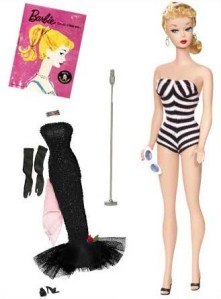
Ah, spring is finally upon us, which means that, along with the allergens that will soon be invading my nasal passages, love is in the air. It also means we’ve entered wedding season. Though people get married year-round, spring is still traditionally seen as “wedding season” and there is an abundance of wedding related advertising. If you’re in your mid-twenties or older, chances are you have at least one wedding to attend this year, maybe more. The first time one of your friends get married, it’s fun an exciting; once the “save the date” magnets start over-taking your refrigerator it’s all a bit overwhelming and exhausting. So come, rest, and let me tell you why weddings are terrible.
I should preface this by saying that when I talk about weddings, I’m not talking about marriage itself. Yes, I could go into a feminist tirade about patriarchy and gender roles, but overall I’m pro-marriage. Two people in love deciding to spend the rest of their lives together is great if that’s what they want. No, I’m talking about the weddings themselves. I’m discussing an event, not an entire institution.
So why are weddings terrible? For one they promote exorbitant spending, even amongst those who cannot really afford it. Weddings continue to get increasingly lavish, with more and more money being spent on a one day affair. We live in a consumer culture and because of this many believe that spending will buy happiness and self-fulfillment. Advertisers use romance as a way to sell goods, and goods become an important part in our celebration of romance. Not surprisingly lavish weddings have their origins around the time of the Industrial Revolution and really took off in the post-WWII period. Weddings become a way to show your status and taste. The show Four Weddings on TLC is all about judging brides on their level of taste and the amount put into their weddings. There is increasing pressure to have a wedding that meets a certain standard, a standard which is getting ever higher.

Indeed a lot of the items now seen as standard or even required for a wedding were traditions started by companies trying to sell their product. Take for example diamond rings. Rings have been used in wedding ceremonies for hundreds of years, but it wasn’t until the 1940s that diamond rings became an essential purchase if one wants to get engaged. And this is all because there was a plentiful supply of diamonds around the world that needed selling, and the N.W. Ayer advertising agency was there to move merchandise for their client. They transformed a rock into a symbol of enduring love.

Soon it will be a requirement for women to arrive to their weddings in giant hamster balls – I mean glass carriages.
Another reason weddings are terrible is because in the quest for the perfect day/moment many women turn this need for perfection on themselves. Many brides make their bodies another project or goal to be worked on so they can be beautiful on their big day. They try to lose weight, whiten their teeth, tan, hire professional hair and make-up artists all just to attain the image of beauty they want for their wedding. They may even impose these standards on their bridesmaids. There’s also an idea around that brides are beautiful and that anyone who doesn’t marry is ugly.
I suppose really to explain why weddings are terrible I could have just said one word: “Bridezillas.” But I don’t want to dedicate too much space to these horrible people, and give them the attention they so clearly crave. But seriously, bridezillas. (As for whether it’s bridezillas who make weddings terrible, or the terribleness of weddings that makes bridezillas, that’s really a chicken or the egg question for me. I think they both feed into each other about equally).
Now after all of this, I’m sure there are some of you out there thinking, “Weddings are not terrible! You’re probably just a bitter, jealous old maid who lives with her 20 cats.” And for you I have two things to say: 1.) No, no I am not; and 2.) Even if I were, in way that’s kind of the point. Weddings are terrible because they marginalize and exclude a large segment of the population – single people. There’s nothing wrong with being single, yet this standard for lavish weddings as likely the one big day of your life makes it easy for single people feel like if they don’t get married they’ve somehow failed. And that just isn’t true. There’s also the fact that lavish weddings currently favor heterosexual couples, but that’s slowly changing at least.
So are weddings terrible? In theory? No. theoretically a day of celebration for two people in love is beautiful and great. In reality? Yes. Unfortunately in today’s consumer culture weddings have become less a celebration of love and more a celebration of goods and status/image. I imagine there’ll eventually be some backlash against these lavish weddings. But we’ll see.
If you’re interested in this subject or want proof that I’m not the only one who thinks weddings are terrible I recommend Cinderella Dreams: The Allure of the Lavish Wedding by Cele C. Otnes & Elizabeth H. Pleck and White Weddings: Romancing Heterosexuality in Popular Culture by Chrys Ingraham.








